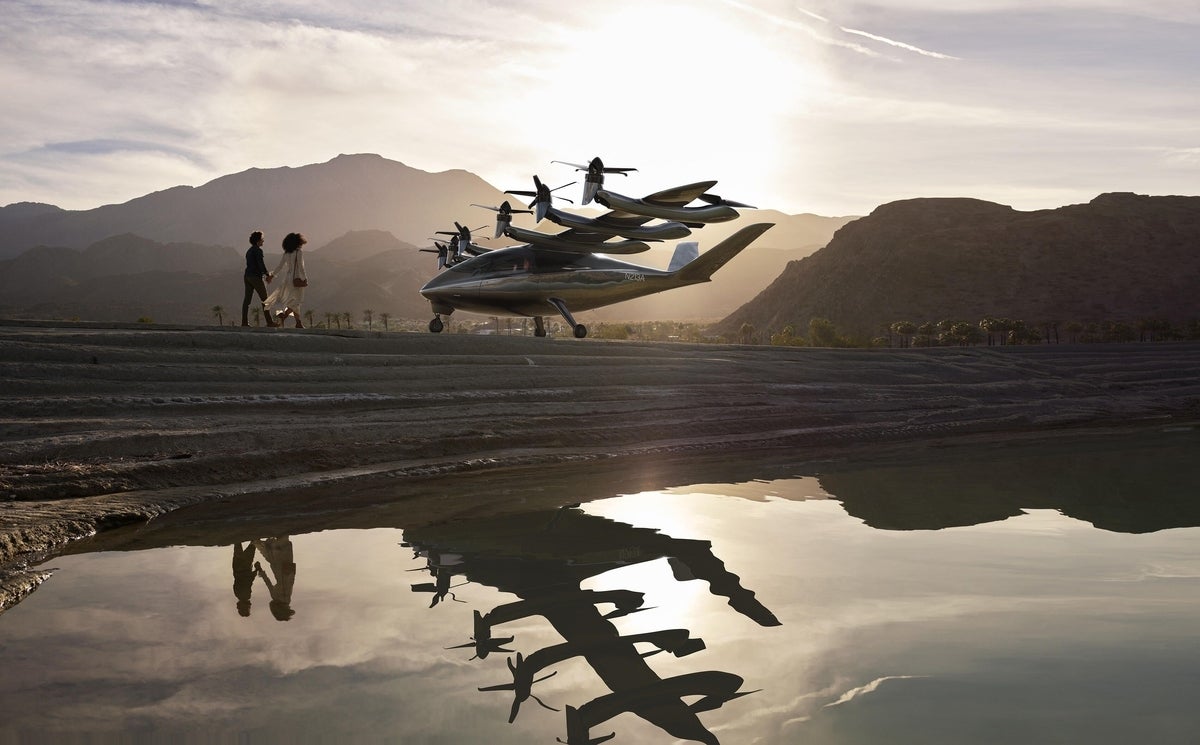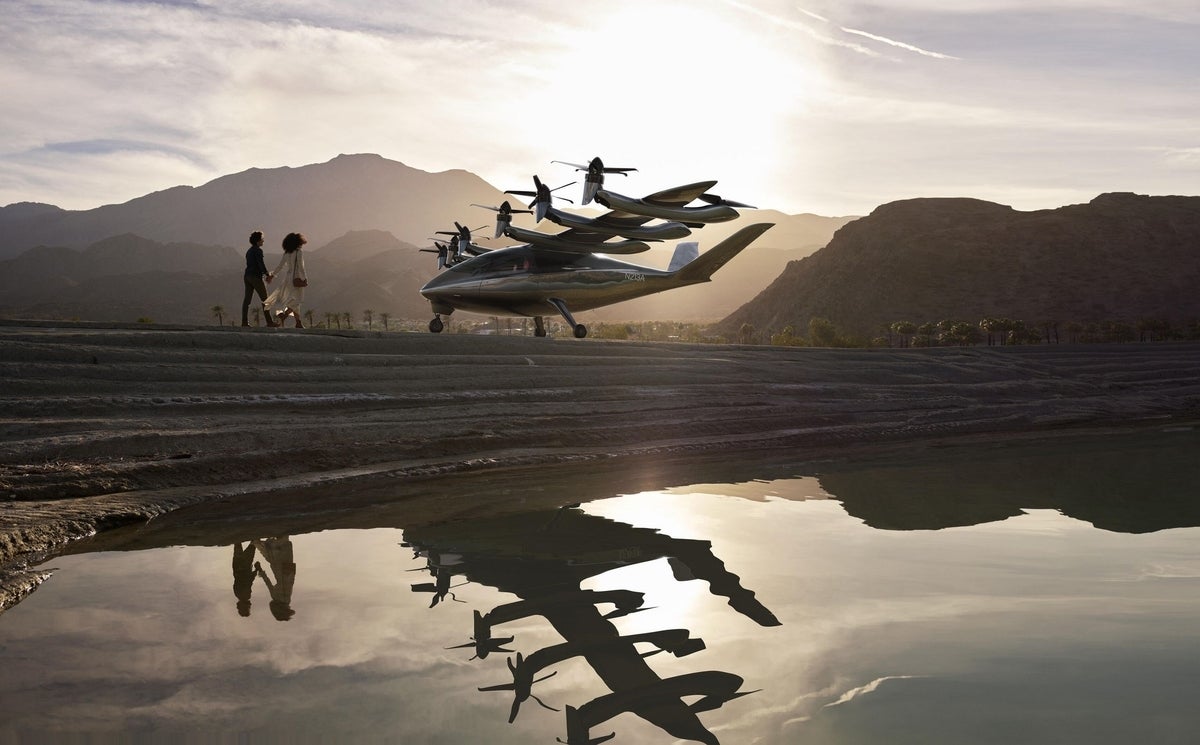
Image: Archer
United Airlines, in a new partnership with aviation startup Archer, plans to bring all-electric vertical takeoff and landing aircraft (eVTOL) to cities for use as air taxis and short-haul flights, and they could appear in the skies as early as 2024.
Archer’s eVTOL aircraft, currently in the testing phase, has already been able to fly 60 miles at speeds up to 150mph, a trip of approximately 24 minutes. United said that a flight in an Archer eVTOL could reduce the carbon consumption of an individual passenger on a trip from Hollywood to Los Angeles International Airport by up to 47%. Archer said that future craft will travel faster and further, potentially unlocking other uses beyond being taxis or shuttles to larger United Airlines hubs.
SEE: TechRepublic Premium editorial calendar: IT policies, checklists, toolkits, and research for download (TechRepublic Premium)
United, as its part of the agreement, will contribute airspace management expertise and aid in the development of the craft. United and Mesa Airlines have also committed to purchasing 200 of Archer eVTOLs “Once the aircraft are in operation and have met United’s operating and business requirements,” which TechRepublic sister site ZDNet said equates to $1 billion.
ZDNet’s Charlie Osborne also pointed out that United’s agreement with Archer indicates it’s potentially a good investment for other companies as well, and that Archer intends to make use of the trust United put in the company to further its goals of being a green alternative to traditional airline travel.
“By working with Archer, United is showing the aviation industry that now is the time to embrace cleaner, more efficient modes of transportation. With the right technology, we can curb the impact aircraft have on the planet, but we have to identify the next generation of companies who will make this a reality early and find ways to help them get off the ground,” said United CEO Scott Kirby. United has committed to several green initiatives, including completely eliminating its greenhouse gas emissions by 2050.
United’s latter promise may be a lofty goal by today’s standards, as long-haul electric planes are still beyond the limits of current battery technology. The BBC reported on “the largest electric plane ever to fly” in May 2020, and while impressive the vehicle can’t be considered “large” by any stretch of the imagination. The electric plane in question was a retrofitted nine-passenger Cessna Caravan 208B that, in order to achieve the battery capacity to fly for 30 minutes, had to have all of its seats removed, save for the pilot’s.
Duncan Walker of Loughborough University told the BBC that an Airbus A380 would need batteries weighing 30 times its current fuel intake to maintain its standard range of 15,000km (9,321 mi), which would effectively prevent it from getting off the ground. If its current configuration were maintained, Walker said, its range would shrink to just 1,000 km (621 mi).
SEE: 5 Internet of Things (IoT) innovations (free PDF) (TechRepublic)
That said, the amount of energy that a 747 jet consumes in a cross-country US flight could power a typical home for 61 years; any bite an Archer eVTOLs could take out of that would be a net gain toward reducing greenhouse gas emissions.
“The team at United share our vision of a more sustainable future. We’re working closely with their test pilots and environmental teams to make sustainable urban air mobility a reality far sooner than people could ever imagine,” said co-CEO and co-founder of Archer Adam Goldstein.
